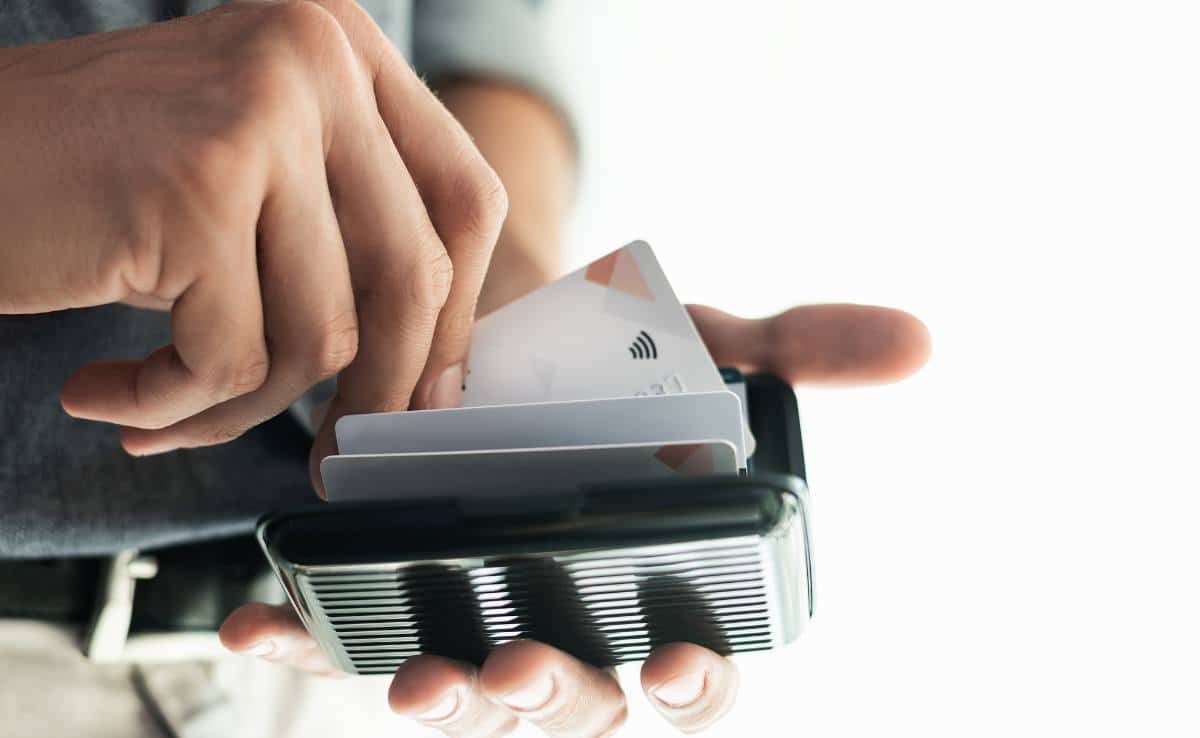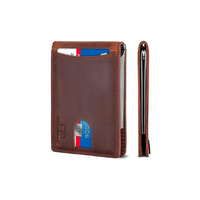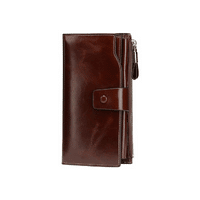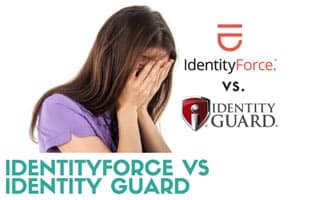Definitive RFID Guide: Benefits, Risks, Cards, Skimmers, Wallets, And More
When you purchase through links on our site, we may earn a commission. Here’s how it works.

There’s been a lot of buzz over the last several years about a way thieves can potentially steal your credit or debit card information out of thin air when they’re in your vicinity, essentially electronically pickpocketing you without you ever knowing.
What makes this possible is RFID (radio frequency identification) technology that’s embedded in some credit, debit, and other ID cards. The fear is that thieves can use what’s called an RFID reader or skimmer to steal your information from your card.
But just how real is the threat? And if you’re worried, can using an RFID wallet offer you protection? We’ll highlight all the information you need to know so you can make the best decision for your security.
How Does RFID Technology Work?
On the surface, RFID technology most resembles a merchandise barcode and barcode scanner. But unlike barcode technology, RFID operates through radio waves and consists of three parts: an RFID tag, an RFID reader, and a scanning antenna.
These RFID tags (sometimes referred to as chips), which contain a circuit and antenna, are embedded in the plastic of your credit or debit card and transmit data to the RFID reader. The reader interprets the radio waves into some of the same data that’s stored on the RFID chip.
Advantages Of RFID Cards
For consumers, the major advantage of using an RFID credit card is that you can have a fast, contactless transaction (an important benefit to many people during the COVID-19 pandemic). You don’t have to swipe your card. Rather you can just wave it over or tap it on the terminal to make your transaction.
Does My Card Have RFID Technology?
How do you know if your credit, debit, or other cards have RFID tags embedded in them? If your card has PayPass™, PayWave™, or Blink™ (shown by a logo or radio wave image), then it has RFID. Most of the major credit card companies now offer you the option of a contactless card upon request.
5 Best RFID Cards For Rewards
Here are five of our favorites for maximizing rewards:
- American Express Platinum – All Amex’s cards are contactless. Current cardholders can call to request contactless-enabled versions of any U.S. American Express card.
- Capital One Venture – In 2017, Capital One started issuing contactless versions of most of its cards.
- Chase Sapphire Reserve & Chase Freedom – Since 2018, Chase offers contactless technology on all newly issued and renewed Chase Visa and debit cards.
- Citi Prestige – Current Citi cardholders can call customer service to request a contactless card for eligible products.
- Discover it Card – If you are a Discover customer, you can request a contactless card. All new cards are contactless.
Are you looking for a new credit card? Learn more about the annual fees, APR, cancelation fees, and benefits in our best cards for young adults article.
How Do RFID Skimmers Work?
All a thief needs to do is to have an RFID reader, also called a skimmer. They hide the reader in their coat pocket, purse, or backpack and come within inches of you in order to read your credit card’s RFID chip in just a few seconds. So, any crowded area is fair or, in this case, unfair, game.
Once a thief’s reader has captured your RFID data, which could include your name, credit card number, expiration date, security code, and other personal information associated with your credit card, they can easily upload it onto his computer. RFID technology is also used in passports, employee badges, some driver’s licenses, and other identification cards.
While early RFID-embedded credit and debit cards transmitted enough personal information for a thief to potentially make a clone card, most banks and credit card companies now say they’ve put measures in place to keep a thief from robbing you blind.
Nearly all cards now automatically change their internal security code after one purchase. So, even if a thief got enough information to successfully use your card number, he or she could only make one purchase. Still, it’s an unsettling thought that any of your personal information could be transmitted without your knowledge.
How Real Is The Threat? RFID vs EMV vs Card Swiping
Although thieves have the capability of RFID skimming, does that mean it actually happens? Many experts say the threat is very minimal for several reasons.
First, experts say that current RFID technology in most cards is extremely secure — companies have put measures in place to protect against this threat. Contactless cards send the store’s reader a one-time encrypted code with information that doesn’t expose your specific account information. The next time you use your card, it sends a different code. So the risk is extremely minimal.
Experts also say that cards with EMV chips as well as RFID-enabled cards are much more secure than swiping your card. Why? Because magnetic strips on credit cards can be compromised much more easily than RFID and EMV technology. These magnetic strips (which is what terminals read when you swipe your card) contain all your information, and experts say it’s easier for thieves to access that information than with EMV or RFID technology.
Another reason that RFID skimming isn’t a huge threat, experts say, is because thieves have much easier ways to steal credit card information. RFID skimming simply isn’t efficient — a hacker would have to spend a lot of time walking around in crowds to hit random people with RFID cards. And they also face the risk of being caught on video surveillance.
What Is RFID Blocking?
How can you protect yourself if you’re concerned about RFID theft? There are a number of RFID-blocking products on the market, including RFID wallets, sleeves, and pouches. Some of these products incorporate foil and other metals to block radio transmission. Experts say your best bet is a “Faraday cage,” which is a mesh-like metal sleeve that filters most electromagnetic frequencies. They also recommend you look for an RFID wallet that’s “electromagnetically opaque.”
Do RFID Wallets Really Work?
Not entirely, say experts, and some are better than others.
Consumer Reports participated in an RFID wallet and shield testing experiment with security experts and found that out of the 10 products tested, none completely blocked out the radio transmissions from RFID chips.
Furthermore, they found a huge disparity between brands — and even between products made by the same manufacturers. They even tested a homemade shield made solely out of duct tape and aluminum foil, and it offered more protection for RFID cards than 8 of the 10 products commercially sold.
Best RFID Wallets
| For Men | For Women |
|---|---|
 |  |
| View on Amazon | View on Amazon |
| Read Review | Read Review |
As we mentioned above, some RFID wallets work better than others. We review our recommendations in our best RFID wallet article. We base these recommendations on what we’ve found in our research about independent testing, customer feedback, and other factors.
Watch RFID Theft In Action
Learn more about RFID and how it happens in this news story from Fox News.
The Best Ways To Protect Yourself
Using an RFID-blocking credit card protector isn’t a replacement for good old common sense. Keep your valuable cards in a secure place at home when possible and always monitor your credit card and bank account statements for fraudulent charges.
There are many ways thieves can access your information and your identity, so be sure to read our comprehensive guide on protecting your identity to learn how to cover all of your security bases.



